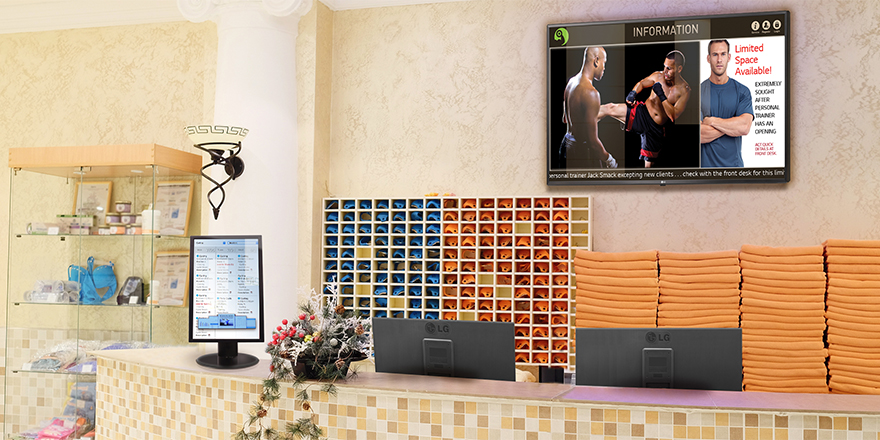
The use of digital signage has proliferated across a multitude of businesses, for delivering targeted content to customers, visitors and employees. As digital displays become more sophisticated, they can enable innovative new features and functions to transform environments and further elevate the experiences they provide. And as the features and functions increase, so does the need to enable them across digital signage networks. LG has the solution: webOS Signage.
What is webOS?
webOS is LG’s powerful and versatile platform widely available in a variety of LG products that come with a display running with a smart component. LG consumer TVs, AI robots, watches, refrigerators and car infotainment systems, plus digital signage displays and Pro:Centric® commercial hospitality TVs,* are all webOS-based.
What is webOS Signage?
LG webOS Signage is a commercial branch of webOS that is used for LG smart digital signage displays. The platform is pre-loaded with native apps such as the subscription-based SuperSign™ Content Management System (CMS) and Signage365Care, plus a basic content manager and management console. webOS Signage provides content delivery and management without requiring an HDMI input.
Even more important, webOS Signage enables LG to provide Application Programming Interfaces (API) allowing for the development and use of third-party software applications by LG partner companies, in order to customize digital signage solutions for virtually any business and numerous industries. Through webOS Signage, these partner applications, including a wide array of digital signage CMS, run directly on LG smart signage displays. The process is made possible by an embedded System-on-Chip (SoC) processor within LG smart commercial displays (series SM and higher) running webOS Signage.
What is SoC?
According to Techopedia, SoC combines the required electronic circuits of various computer components onto a single, integrated chip (IC). SoC is a complete electronic substrate system that may contain analog, digital, mixed-signal or radio frequency functions. Its components usually include a graphical processing unit (GPU), a central processing unit (CPU) that may be multi-core, and system memory (RAM).**
Stay tuned. In our next post we’ll get into the benefits of LG webOS Signage for LG partners and end users, and cover the Five Pillars of webOS Signage and why they matter.
* LG’s Pro:Centric on webOS is a commercial branch of webOS for hotel guest room TVs. The Pro:Centric application environment provides extended customizable tools including HTML5, Java, and Flash. With these tools, LG systems integrator partners can optimize the full range of LG hospitality TVs and develop their own enhanced services. This increased control and customization provides premium hotel services to guests without the need for a set-top box. For hotels looking to retrofit their existing legacy TVs rather than purchase new TVs, LG’s Pro:Centric-enabled set top box provides all the same tools and benefits without the need to replace recently purchased TVs.
** https://www.techopedia.com/definition/702/system-on-a-chip-soc